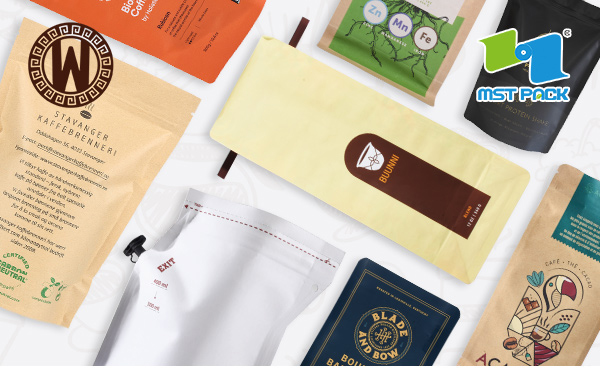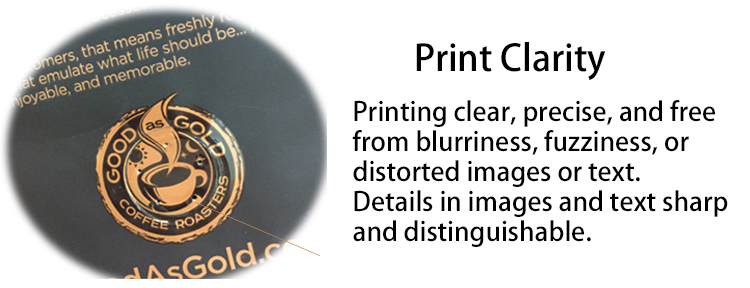When it comes to coffee packaging, several critical factors come into play, including printing technology, package design, and material selection. In this essay, we will delve into the various printing methods for coffee packaging, their advantages, and suitable applications. We will also explore how package design and material choices play a vital role in conveying a brand's identity.
Coffee packaging plays a crucial role in the modern market. Coffee is not just a beverage; it represents a way of life and culture. Therefore, its packaging needs to convey more than just information; it should captivate consumers while maintaining the coffee's quality and freshness. Printing techniques and design aesthetics play a pivotal role in this.

The following are common printing methods for coffee packaging, along with their characteristics and suitable applications:
Offset Printing: Offset printing is a high-resolution printing method suitable for intricate images, graphics, and text. It is commonly used for the outer packaging of coffee, such as boxes or bags. Offset printing can produce fine details and vibrant colors, ideal for conveying the essence of the coffee.
Gravure Printing: Gravure printing is often used for high-volume coffee bag production. It is known for its ability to reproduce high-quality images with fine details. Gravure involves engraving the image onto a cylinder, then transferring ink to the packaging material. This method is particularly effective for complex, high-resolution designs.
Flexographic Printing: Flexographic printing is a cost-effective, high-speed method commonly used for printing coffee bags, especially paper and plastic bags. It is versatile and can deliver quality prints on various packaging materials.
Digital Printing: Digital printing is a contemporary method suitable for small-batch or customized coffee packaging. It offers quick and high-quality printing without the need for plates, making it ideal for smaller coffee producers or special event packaging.
Screen Printing: Screen printing is commonly used to create textured, high-ink deposits on coffee packaging, including metallic ink and special effects. This method involves pushing ink through a stencil (screen) onto the packaging material. It is particularly effective for achieving unique, tactile designs.
Foil Stamping and Embossing: Foil stamping and embossing add a touch of luxury to coffee packaging. Foil stamping involves using heat to adhere metallic or colored foil to the packaging, while embossing creates raised, textured areas. These techniques are often combined with other printing methods for a premium look and feel.
Heat Transfer Printing: Heat transfer printing is commonly used for coffee cups, coasters, and other coffee-related accessories. It involves transferring an image from a carrier paper to the packaging material using heat and pressure, ensuring high-quality, vibrant images on various materials.
Spot Color Printing: Spot color printing involves using specific ink colors to achieve precise brand colors and color matching. This method is commonly used to ensure consistent brand colors and is effective for simple, eye-catching designs.
Each of these printing methods offers unique advantages, and the choice of method depends on factors such as budget, design complexity, packaging material, and print quantity. Selecting the right printing method can help create attractive coffee packaging that effectively communicates your brand identity to consumers.

In addition to printing methods, design is a crucial factor in capturing the consumer's attention. Successful design can make a coffee brand stand out in a competitive market. Here are some design elements and considerations:
Brand Logo and Identity: The brand logo is a core element of coffee packaging. It should be clear, easily recognizable, and convey the brand's core values and personality.
Images and Illustrations: Coffee packaging often includes images related to coffee, such as coffee beans, cups, or coffee makers. These images should be consistent with the brand image and visually engaging.
Color Selection: Color is essential in coffee packaging design. Different colors evoke various emotions and moods, so brand colors should be chosen thoughtfully to align with the brand's values and goals.
Product Name and Description: Coffee packaging should feature a clear product name and description to help consumers understand the coffee type, origin, and characteristics.
Sustainability Information: More consumers are concerned about sustainability. Therefore, sustainability information and certifications, such as organic certification, use of recyclable materials, and sustainable sourcing practices, are crucial for attracting environmentally conscious consumers.
Package Shape and Structure: The shape and structure of the packaging are also design elements. Innovative packaging design can capture the consumer's eye and enhance brand recognition.
Brand Story: Some coffee brands establish an emotional connection with consumers through a brand story on the packaging. This can include the brand's history, values, or its relationship with the coffee's place of origin.
Typography and Text Arrangement: The arrangement of text, font choices, and size are vital for readability and visual appeal. Clear typography can help consumers quickly access essential information.

In today's market, sustainability is of paramount importance in coffee packaging. Consumers are increasingly concerned about a product's eco-friendliness and social responsibility. Therefore, coffee brands need to consider not only their material choices but also actively adopt sustainable packaging practices, such as reducing packaging waste, using renewable materials, and supporting fair trade.
Coffee packaging is a vital component of brand success. By selecting appropriate printing methods, design elements, and packaging materials, coffee brands can capture consumers' attention, convey their brand image effectively, and maintain the coffee's quality and freshness. Sustainability should also be a significant consideration in packaging design to meet the demands of environmentally conscious consumers.